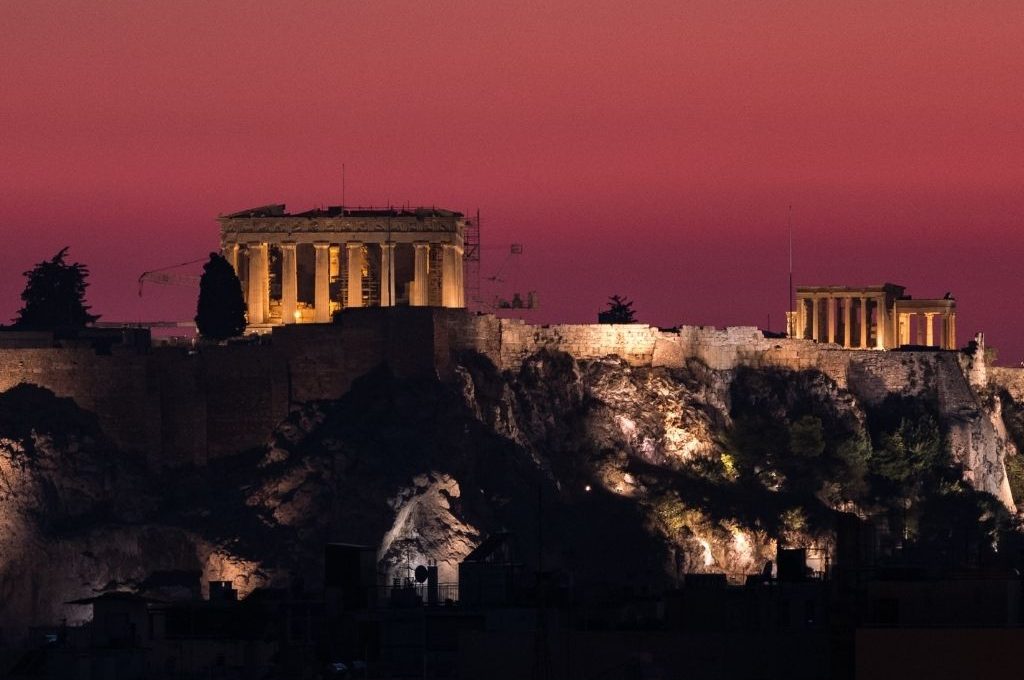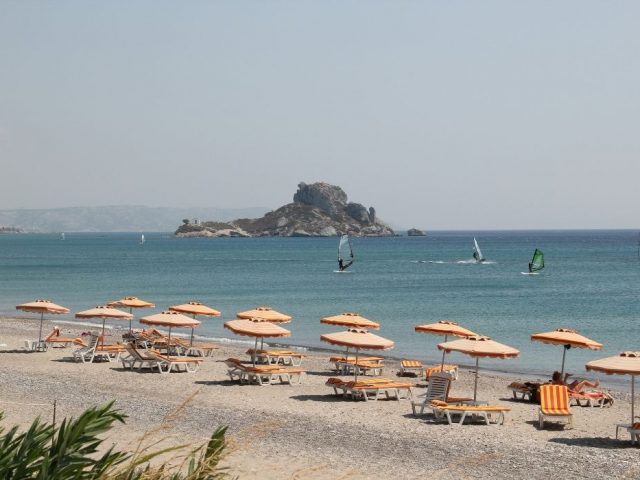Be ready for a journey to the birthplace of democracy, Athens!
Athens is one of the most vibrant cities with quite a rich history and culture. This is where mythology meets the modern world. From the astonishing Acropolis and the bustling Monastiraki Square to the majestic Temple of Olympian Zeus and the peaceful Lycabettus Hill, Athens promises to create an unforgettable experience and treasured memories for you.
🛎️ Reminder: To explore Athens step by step with your digital tour guide, don’t forget to download Piri Guide! 😊
Where is Athens?
Athens is the capital city of Greece, in the southern part of the country. It is in the region of Attica, which is located on the eastern coast of the country and bordered by the Aegean Sea to the east.
Athens is one of the oldest cities in the world, with a history that spans over 3,400 years. It is the birthplace of Western civilization and democracy. Also, the city is home to some of the most important landmarks and monuments of ancient Greece.
How to Go to Athens?
By Plane: Athens has a major international airport, Eleftherios Venizelos Airport (ATH), which is located about 20 km east of the city centre. Many major airlines operate flights to Athens from various destinations around the world. From the airport, you can take a taxi, a bus, or the metro to reach the city centre.
By Train: Athens is connected to several European cities by rail, and there are daily trains to and from Thessaloniki, Patras, and other major Greek cities. The main railway station in Athens is Larissa Station.
By Bus: Athens is also well-connected by bus to other parts of Greece and several European cities. KTEL is the main bus company operating in Athens, and it has a large bus station (Kifissos Bus Terminal) located about 5 km west of the city centre.
When to Go to Athens?
You can visit Athens year-round, but the best time to go depends on your personal preferences and travel plans.
Athens has a Mediterranean climate, with hot and dry summers and mild and rainy winters. The summer months of June to August are the hottest and busiest, with temperatures reaching up to 35°C (95°F) and large crowds of tourists. Spring (March to May) and autumn (September to November) are milder and less crowded. Winter is mostly rainy and chilly, with temperatures ranging from 5-15°C (41-59°F).
Best Places to Visit in Athens
We’ve made a list of the best and must-visit places in Athens. Yet, we should remind you that you can find more on Piri Guide mobile app. Piri Guide detects your location, offers you the best travel routes, and starts telling you the hidden stories of wherever you are. All you have to do is to get your headphones or earbuds and follow the path at your own pace. Then, don’t set out for your trip before downloading the digital travel guide! 😊
Acropolis of Athens
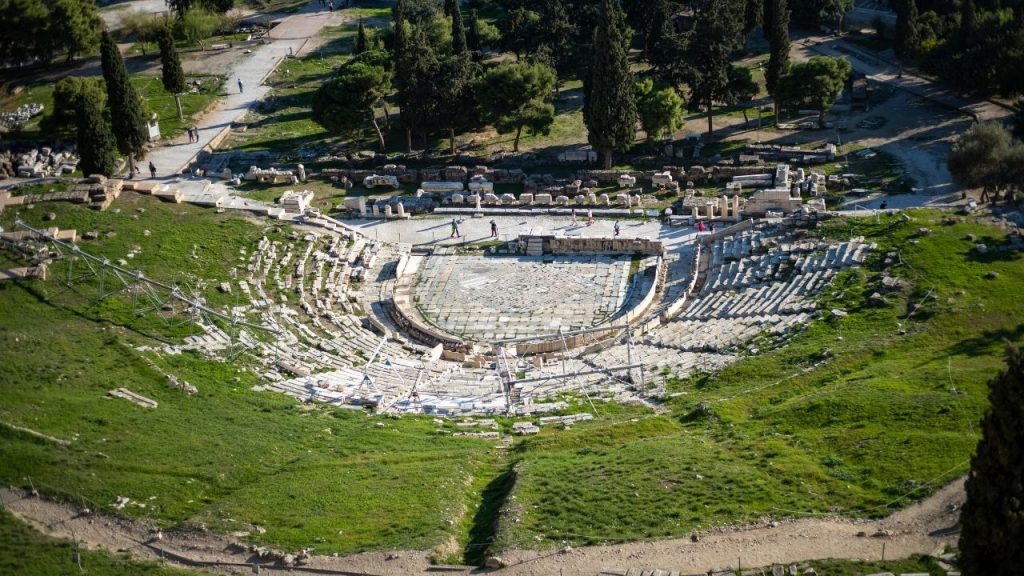
Acropolis is a fortress-like complex on a high hill. The name Acropolis comes from the Greek words “akro,” meaning “high” or “edge,” and “polis,” meaning “city.” The most famous Acropolis in the world is the one in Athens of the 5th century BC. Evidence of human settlement on the Athens Acropolis dates back to the Neolithic period, but the area’s development began with the Mycenaean civilization.
Pisistratus and his sons built the former Athena Temple, where the Parthenon stands today. But their most significant legacy was the revival of the Panathenaic Games at the time. Held every four years in honour of Goddess Athena, the games incorporated a religious festival, athletic competitions, and cultural events. Therefore, Acropolis also serves as a sacred site rather than just a fortress. Also, do not forget to see the first olive tree planted by Athena within the borders of the Acropolis.
Temple of Olympian Zeus
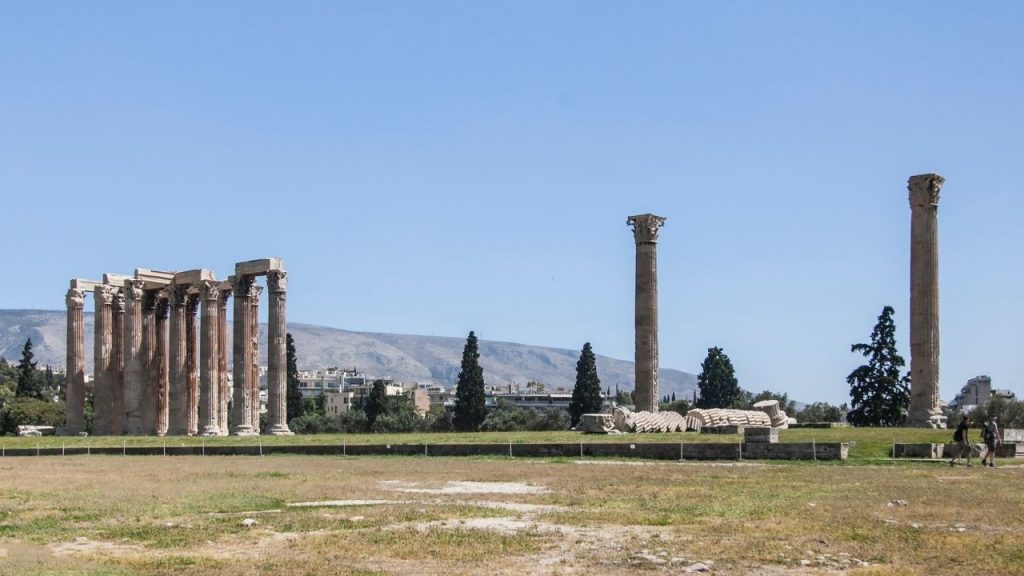
The temple was dedicated to Zeus, the king of the gods in Greek mythology. He was the father of many Greek Gods and Goddesses, like Athena, Apollo, and Dionysus. He was the ruler of the universe and the protector of households and the city-state, or polis. Protecting the city-state meant maintaining authority and justice. So, the Greeks saw Zeus as the guardian of justice, too.
One of the oldest and largest temples dedicated to Zeus is the Temple of Olympian Zeus. The temple had local limestone and marble with a rectangular shape in doric order. Until the Parthenon, the Temple of Olympian Zeus was the biggest temple of its time.
Lycabettus Hill
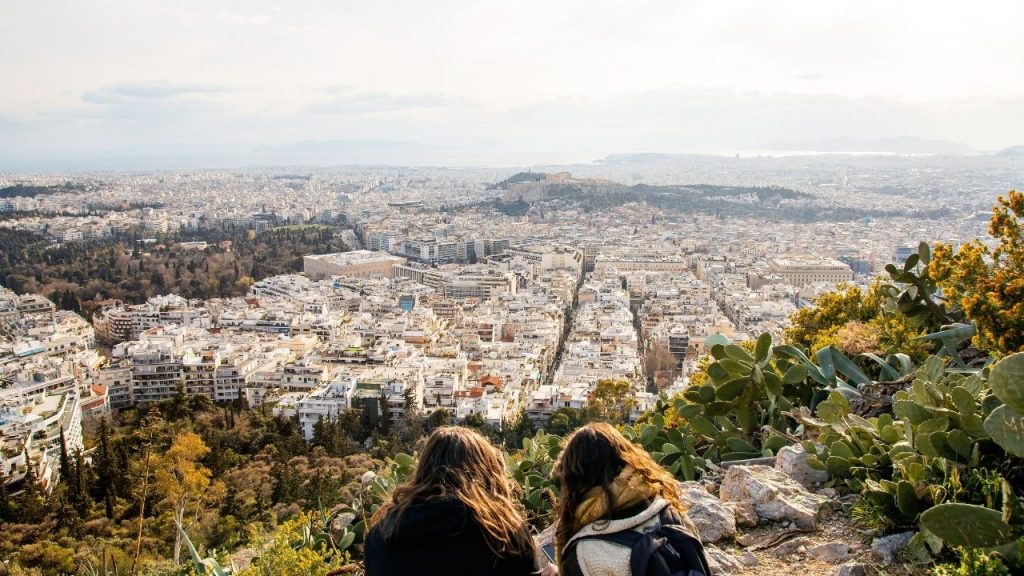
In Greek mythology, Lycabettus Hill holds a special place, with various stories and legends associated with it. “Lycabettus” translates to “wolf path” in Ancient Greek, and there is even a belief that wolves used to roam freely on the hill.
Lycabettus Hill is also home to a temple dedicated to the Greek god Zeus, as well as an ancient church known as Saint George or Agios Georgios. Additionally, the Lycabettus Theater, which seats 4,000 people, is located on the hill and is used for concerts and theatre performances at various times throughout the year. On March 25th, Greek National Day, citizens hold celebrations and ceremonies in the theatre.
Academy of Athens
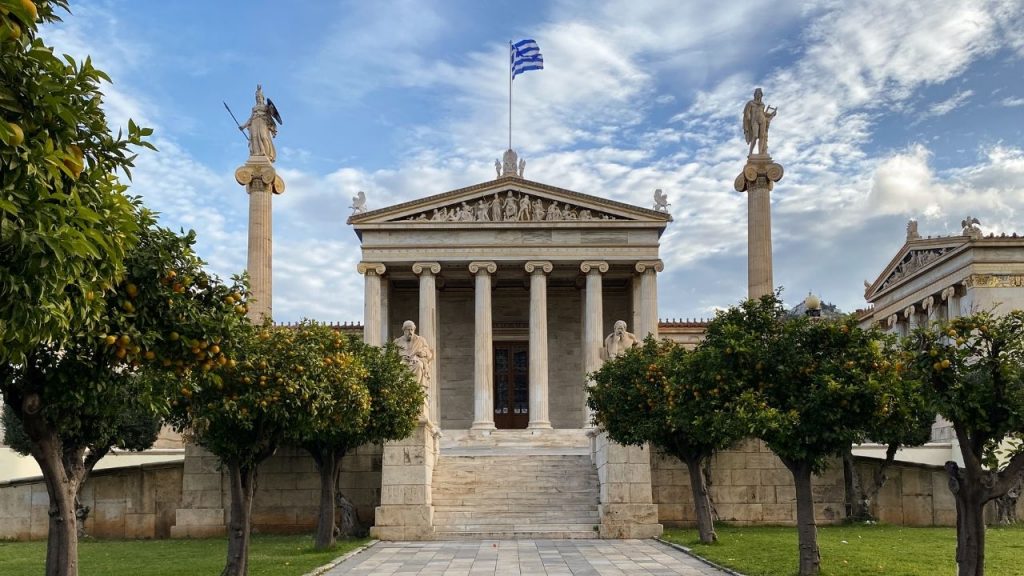
The Academy of Athens is Greece’s national academy and top research institute. The roots of this university go back to Plato’s Academy in ancient times.
Plato founded the Academy in 387 BC as a philosophical school, which was in a grove outside of Athens, Akademia. The grove takes its name after Akademos, who was the owner of a mansion in the area. Because of the owner’s name, this area where Plato taught his classes became an “Academy”. Today, the term “academy” is a component of the concept of a university, and the Academy of Athens is its precursor.
Panathenaic Stadium
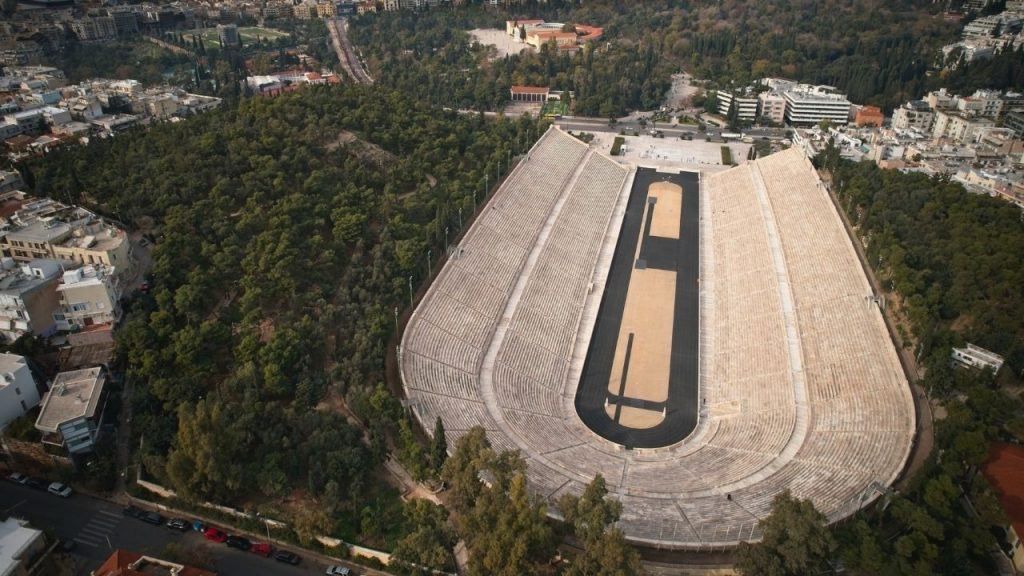
The stadium had also the name Kallimarmaro, which means “Beautiful Marble” in Greek. Panathenaic Stadium had this name because it’s the only stadium in the world entirely made of white marble! So, what are these Panathenaic games?
The games would honour the goddess Athena, who became the patron of Athens after competing with the god Poseidon to win the favour of the Athenian people by offering them gifts. The games were part of a more significant religious festival, the Panathenaia. Every fourth year, the festival was known as the “Great Panathenaia.” It included games and lasted for 3 or 4 days longer than the regular festival. These games were vital for the citizens of Athens but less significant than the Olympic Games.
If you are on a Europe tour and your next destination is Rome, check out our Rome Travel Guide! 😊

